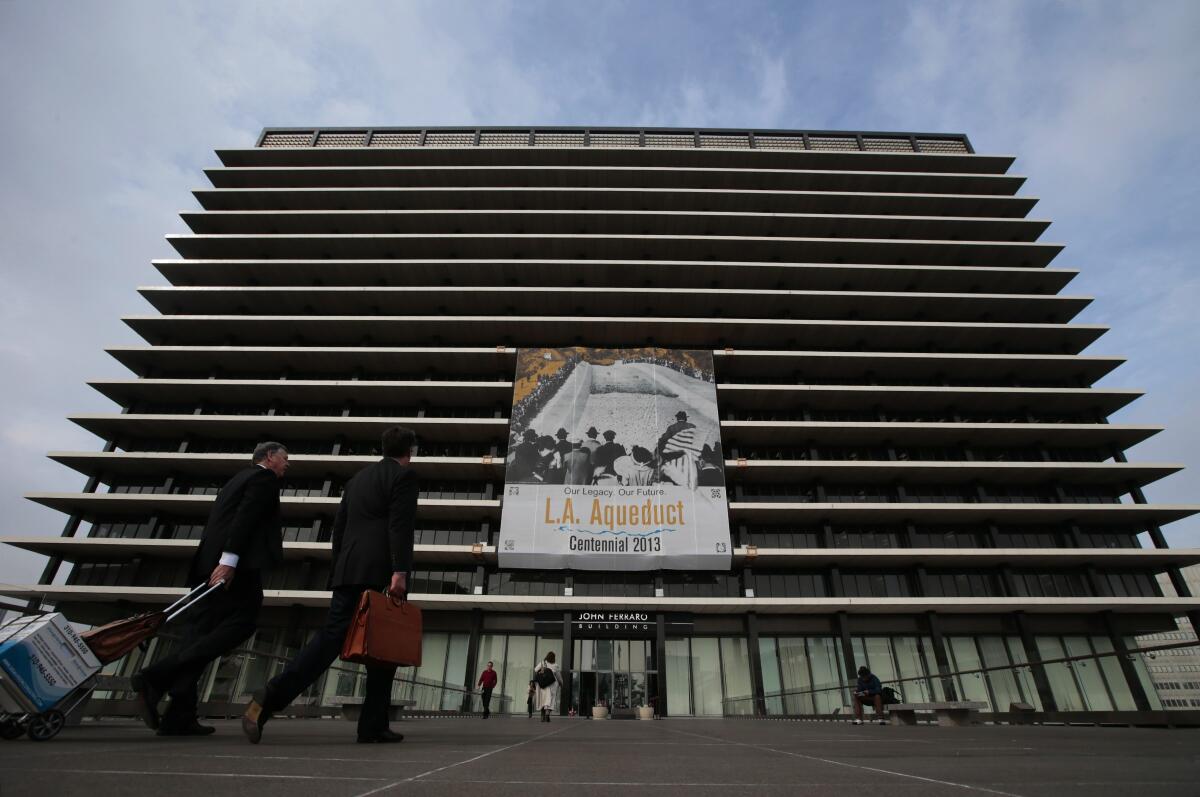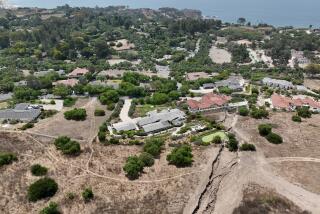L.A. to pay $38 million over downed power line that electrocuted father and daughter

The Los Angeles Department of Water and Power has agreed to pay $38 million to settle a lawsuit filed after a father and daughter were electrocuted by a downed power line.
Ferdinand Tejada, 53, and his daughter, Janina Reyn Tejada, 20, were killed outside their Panorama City home in January 2021, after coming into contact with a high-voltage electrical wire that fell into their backyard. Two surviving family members, both of whom were witnesses, sued the DWP, saying the utility failed to properly maintain the pole that held the overhead wire in place.
In a statement, DWP officials expressed their “deepest condolences” to those family members, acknowledging they had experienced an “unfathomable” loss. Those officials said they have overhauled the utility’s power pole inspection program and begun repairing those that pose the greatest risk.
“This is a tragedy,” DWP General Manager Marty Adams said in an interview Sunday. “It’s a tragedy that, at least in theory, we should have been able to foresee the possibility of this happening.”
DWP officials said they launched an effort three weeks ago to repair about 1,600 of the utility’s most dangerous power poles. Some have wood that is severely deteriorated, either in the poles or in the cross-arms, which hold high-voltage wires in place, while others have electrical equipment that needs replacing, they said.
Utility crews have fixed more than half of those so far, replacing or repairing wires, electrical distribution equipment, cross-arms or the poles themselves.
On Sunday, the agency took an additional step, sending workers across the city to personally deliver notices to residents who live near the remaining 753 high-priority poles. Those notices advised residents and businesses that repairs will be performed over the next three weeks.
“Until repairs are made, we urge you to use caution in the vicinity of the pole,” said the DWP door hanger, which is being left at about 3,200 homes and businesses.
The door hanger also reminded customers to never touch a downed or dangling wire and to call 911 if they see one. The DWP plans to finish delivering those notices by the end of Monday.
The utility’s five-member oversight board signed off on the $38-million payout last month. The board is set to meet Tuesday to receive an update on the power pole repair and inspection program.
A lawyer for the Tejada family did not respond to inquiries from The Times. Mayor Karen Bass, who has the power to appoint and remove DWP board members, said Sunday that what happened to the Tejada family was “absolutely devastating.”
“I’ve directed LADWP to quickly and thoroughly implement reforms to minimize the chance an incident like this ever happens again,” she said in a statement. “Angelenos should feel safe in their own backyards.”
To satisfy the terms of the settlement, the DWP will pay out $20 million. Its insurance carrier will provide the remaining $18 million.
The DWP is responsible for the inspection and maintenance of more than 301,000 power poles and nearly 7,300 miles of overhead distribution lines. Poles and wires that are found to pose a public safety threat are supposed to be fixed within 24 hours, according to the department’s own standards.
In 2011, the state’s Public Utilities Commission audited the DWP’s operations and concluded that the utility did not inspect its overhead wires frequently enough to ensure they are in good condition.
Three years later, the Los Angeles Daily News reported that the utility had fallen behind in replacing aging poles and associated equipment. That report also found that more than one-fourth of the DWP’s poles — about 87,000 — had exceeded their 60-year lifespan.
At the time, then-Councilmember Felipe Fuentes, who headed the committee that oversees the DWP, voiced his own concerns over the pace of repairs. It “feels like we’re not making any ground on a program that already is sort of behind schedule,” he said.
Adams said the discussion in 2014 focused heavily on the age and lifespan of DWP power poles, as opposed to the inspection system needed to determine which ones need repairs. The DWP overhauled its inspection program in 2021 — the year the Panorama City incident occurred — bringing in a contractor to supplement the utility’s own workers, he said.
Tejada and his daughter were killed early on Jan. 25, 2021, after a rainstorm. That night, a pin on the power pole was dislodged, causing a power line to become loose and then fall to the ground, according to a DWP spokesperson.
When the wire fell, it caused a “violent noise,” the DWP official said. Shortly before 3 a.m., Janina Tejada went into the backyard to find out what happened and came into contact with the wire. Her father ran out and tried to help her, the DWP official said. Both were electrocuted.
Family members of the Tejadas sued a few months later, saying the DWP was responsible for those deaths. In their lawsuit, they said the utility had been negligent in its maintenance of its power poles and high-voltage electrical lines.
The lawsuit was filed by Julleth Tejada, wife of Ferdinand Tejada, who saw and heard her husband and daughter as they were electrocuted. The other plaintiff is Estrelita Madrigal, grandmother of Janina Tejada.
Madrigal “heard the explosion, smelled the smoke and fire, heard the screams and the yelling and was aware that her granddaughter was being electrocuted,” the lawsuit states.
The DWP’s Adams acknowledged that the power pole did not receive its proper inspection. Although the utility performed a once-a-year inspection at that location — the kind done from the street — it did not receive a more detailed, up-close inspection, which is required by the state every five years, he said.
Although the DWP has been spending $1 billion a year on maintenance and repairs to its infrastructure, Adams said, that money was not going toward the work needed at many of its most seriously damaged poles.
On Friday, DWP officials briefed the aides of council members about the notices that are being hung on the doors of residents who live near power poles that the utility has deemed a public safety risk. The agency also tweeted messages in English and Spanish advising Angelenos not to touch downed power lines.
Councilmember Katy Yaroslavsky, who heads the council committee that oversees the DWP, said she intends to introduce a motion Tuesday calling for leaders of the utility to explain the “immediate risks” posed by its power poles and discuss their next steps.
“It is outrageous that our electric poles have been allowed to fall into such a state of disrepair that hundreds across the city remain in life threatening condition,” she said in a statement.
More to Read
Sign up for Essential California
The most important California stories and recommendations in your inbox every morning.
You may occasionally receive promotional content from the Los Angeles Times.












